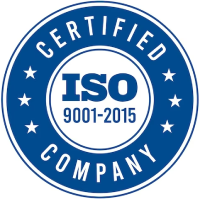


Advancements in medical technology have revolutionized the field of eye care, offering innovative solutions for various vision-related conditions. Retinal laser and surgery have emerged as powerful techniques that have significantly improved outcomes for patients with retinal disorders. In this blog, we will delve into the world of retinal laser and surgery, exploring their benefits and the conditions they can effectively treat.
Retinal laser treatment, also known as photocoagulation, is a non-invasive procedure that utilizes a focused beam of light to treat retinal conditions. The laser is used to create small, controlled burns on the retina, sealing off leaking blood vessels or repairing damaged tissue. This treatment is particularly effective for conditions such as diabetic retinopathy, retinal tears, and macular degeneration.
Diabetic Retinopathy: Retinal laser treatment helps manage diabetic retinopathy by targeting abnormal blood vessels in the retina, reducing leakage and preventing further damage. It can also address macular edema, a common complication of diabetic retinopathy.
Retinal Tears and Holes: Laser therapy can be used to create tiny burns around retinal tears or holes, causing scarring that helps seal the tear and prevent retinal detachment. This preventative measure is crucial in preserving vision and avoiding more invasive surgical interventions.
In some cases, retinal surgery may be required to address more complex retinal conditions. Retinal surgery involves delicate procedures performed by skilled ophthalmologists to repair or remove damaged retinal tissue and address issues affecting the retina's structure and function.
Retinal Detachment: Retinal detachment occurs when the retina separates from its underlying tissue, leading to vision loss. Surgery is often necessary to reattach the retina and prevent further complications. Various surgical techniques, such as scleral buckling, vitrectomy, or pneumatic retinopexy, may be employed based on the severity and location of the detachment.
Epiretinal Membrane: Epiretinal membranes, also known as macular puckers, can cause distortion or blurriness in central vision. Surgical intervention involves removing the membrane from the surface of the retina, improving visual clarity and quality.
Vitreous Hemorrhage: In cases of severe bleeding within the vitreous gel, surgery may be required to remove the blood and restore clear vision. This procedure, called a vitrectomy, involves removing the vitreous gel and replacing it with a clear solution.
In today's digital age, it's crucial to set reasonable limits on your child's screen time. Excessive use of electronic devices like smartphones, tablets, and computers can strain their eyes and contribute to problems like eye fatigue, dryness, and myopia. Establish specific rules for screen time and encourage breaks where they can rest their eyes by focusing on objects at varying distances.
a. Preserving and Restoring Vision: Retinal laser and surgery techniques are designed to preserve and restore vision in individuals with various retinal conditions. By addressing underlying issues and preventing further damage, these procedures can significantly improve visual outcomes.
b. Minimally Invasive: Retinal laser treatment is a non-invasive procedure that can often be performed in an outpatient setting. It typically requires minimal downtime and discomfort. While retinal surgery is a more invasive procedure, advancements in technology have led to smaller incisions, faster recovery times, and improved outcomes.
c. Customized Approach: Each retinal condition requires a customized treatment plan. Retinal laser and surgery techniques can be tailored to suit the specific needs of the patient, ensuring precise and targeted intervention.
d. Long-Term Stability: Retinal laser treatment and surgery aim to achieve long-term stability in vision. By addressing the underlying cause of the retinal condition